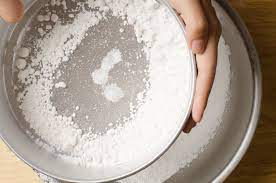In this article, we will delve into the topic of silicon dioxide and its relation to gluten-free products. Silicon dioxide is a common food additive used for various purposes, and understanding its role is crucial for those following a gluten-free diet. We will explore the nature of silicon dioxide, its sources, its presence in food, and its gluten-free status.
What is Silicon Dioxide?
Silicon dioxide, also known as silica, is a compound naturally found in the Earth’s crust. It exists in various forms, such as quartz, sand, and even certain gemstones. It is commonly used in the food industry as an anti-caking agent, an ingredient that prevents clumping or sticking of powders and granules.
Sources of Silicon Dioxide
Silicon dioxide can be obtained from both natural and synthetic sources. Natural sources include sand, quartz, and diatomaceous earth, while synthetic sources involve the extraction or production of silicon dioxide through chemical processes. The synthetic form is often used in food manufacturing due to its purity and consistency.
Silicon Dioxide in Food
Silicon dioxide is a versatile food additive and is used in a wide range of products. It can be found in powdered substances like spices, seasoning blends, and coffee creamers to prevent them from caking. It is also used in the production of certain beverages, including beer and wine, as a clarifying agent.
Understanding Gluten
Gluten is a group of proteins found in grains like wheat, barley, and rye. It gives elasticity to dough and helps it rise. For individuals with gluten-related disorders, such as celiac disease or gluten sensitivity, consuming gluten can lead to adverse reactions and health issues.
Gluten-Free Diet
A gluten-free diet is essential for individuals with gluten-related disorders. It involves avoiding all sources of gluten, including foods made with wheat, barley, and rye. This dietary approach is crucial for managing symptoms and maintaining overall health.
Silicon Dioxide and Gluten-Free Products
Silicon dioxide is commonly used in gluten-free products as an anti-caking agent. Its purpose is to ensure that the texture and quality of the products are maintained. This additive is particularly beneficial in gluten-free flours, baking mixes, and ready-to-eat snacks, where clumping can affect the end product’s consistency.
Is Silicon Dioxide Gluten-Free?
Yes, silicon dioxide is gluten-free. It is a mineral compound and does not contain gluten proteins. The use of silicon dioxide in products does not introduce gluten or pose a risk to individuals with gluten-related disorders.
Potential Risks or Side Effects
Silicon dioxide is generally considered safe for consumption. It is non-toxic and has a long history of use in the food industry. However, some individuals may be sensitive to silica dust, which can be present in certain occupational settings. Ingesting silicon dioxide as a food additive does not pose significant risks or side effects.
Labeling and Regulation
Food labeling regulations vary across different regions, and it is important to note that the presence of silicon dioxide in a product does not indicate the presence of gluten. Gluten-containing ingredients must be clearly disclosed on food labels, as required by law. However, silicon dioxide itself is not a source of gluten and does not need to be specifically labeled.
Conclusion
Silicon dioxide, also known as silica, is a common food additive used as an anti-caking agent. It is widely utilized in gluten-free products to maintain their texture and quality. Silicon dioxide is gluten-free and does not introduce gluten into the diet. Individuals with gluten-related disorders can safely consume products containing silicon dioxide without concern.
FAQs
Can individuals with celiac disease consume products with silicon dioxide?
Yes, individuals with celiac disease can safely consume products with silicon dioxide as it does not contain gluten.
Does silicon dioxide affect the taste of food?
No, silicon dioxide is tasteless and odorless, so it does not affect the taste of food products.
Is silicon dioxide only used in gluten-free products?
No, silicon dioxide is used in various food products, both gluten-free and those containing gluten.
Can I substitute silicon dioxide with other anti-caking agents?
There are alternative anti-caking agents available, but their effectiveness and compatibility may vary depending on the specific application.
Are there any potential health risks associated with consuming silicon dioxide?
When used as a food additive, silicon dioxide does not pose significant health risks. However, individuals with occupational exposure to silica dust may need to take precautions.

